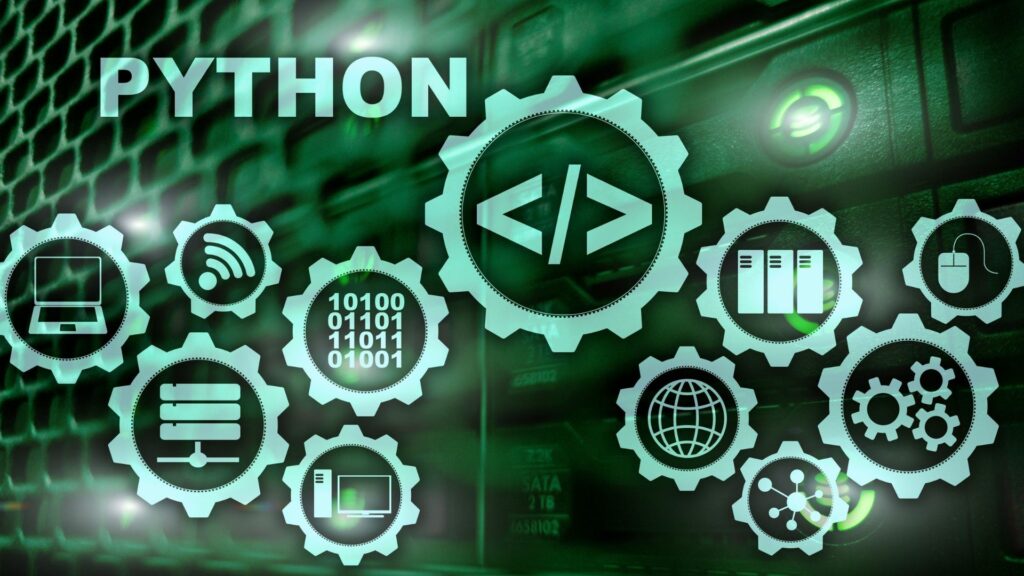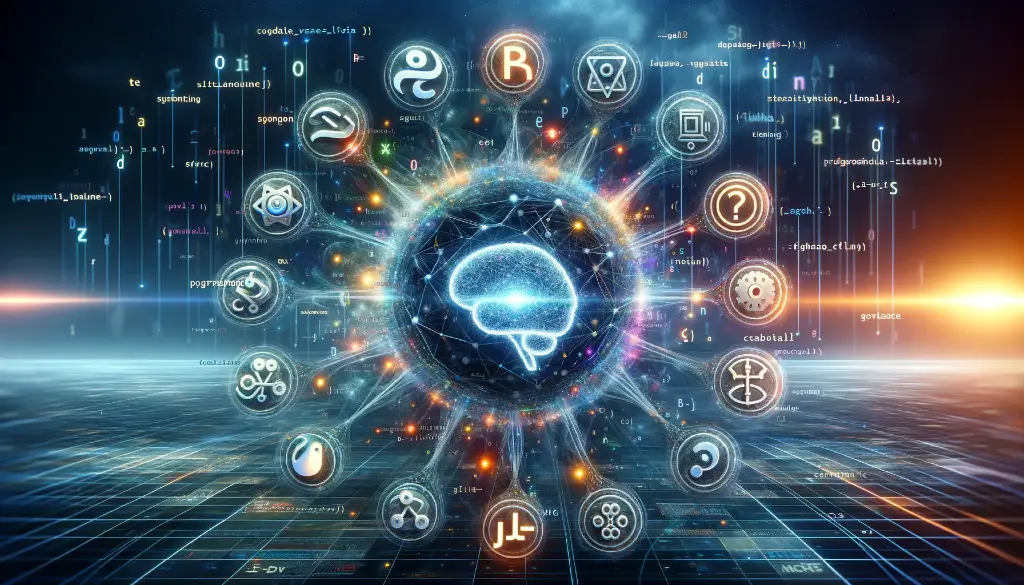Introduction
In the ever-evolving landscape of artificial intelligence (AI), mastering the language of programming is akin to unlocking the door to innovation and advancement. Just as language serves as the conduit for human communication, programming languages form the foundation for AI development, enabling engineers and developers to breathe life into algorithms and transform raw data into intelligent systems.
In this blog, we embark on a journey to explore the best programming languages for AI, deciphering their nuances, strengths, and applications in the realm of machine learning, data science, and software development.
Whether you’re a seasoned coder or an aspiring AI enthusiast, understanding the intricacies of programming languages is key to harnessing the full potential of AI and navigating the complexities of modern technology. Join us as we unravel the language of AI programming and embark on a quest to master the tools that shape the future of intelligent systems.
Understanding the Role of Programming Languages in AI
Programming languages serve as the cornerstone of AI development, providing the building blocks for creating intelligent systems and applications. At their core, these languages act as the medium through which developers express algorithms, manipulate data, and implement machine learning models. The choice of programming language significantly influences the efficiency, flexibility, and scalability of AI projects, making it crucial to understand the role each language plays in the AI ecosystem.
When delving into the world of AI programming, it’s essential to recognize that different languages offer distinct advantages and capabilities. Some languages, like Python, are renowned for their simplicity, readability, and extensive libraries tailored for AI and machine learning tasks. Others, such as R and Julia, excel in specific domains like statistical analysis and numerical computing. Additionally, languages like Java and C++ provide robust performance and scalability, making them suitable for developing AI applications that require high computational efficiency.
Beyond their technical capabilities, programming languages play a vital role in shaping the AI community and ecosystem. Languages like Python have emerged as the de facto standard for AI development, fostering a vibrant community of developers, researchers, and enthusiasts who collaborate on open-source projects, share knowledge, and contribute to the advancement of AI technologies. This collaborative spirit and the wealth of resources available in languages like Python have propelled their adoption in industries ranging from healthcare and finance to autonomous vehicles and robotics.
In essence, programming languages serve as the gateway to AI innovation, empowering developers to explore new frontiers, experiment with cutting-edge techniques, and bring their ideas to life. By understanding the role of programming languages in AI, developers can make informed decisions about which languages to prioritize based on project requirements, domain expertise, and ecosystem support.
Python: The King of AI Programming
In the realm of artificial intelligence (AI) programming, one language reigns supreme: Python. Renowned for its simplicity, versatility, and robust ecosystem, Python has emerged as the go-to language for AI development, earning its title as the “king” of AI programming. Here’s why Python stands out as the preferred choice for AI enthusiasts and professionals alike:
- Simplicity and Readability: Python’s clean and concise syntax makes it easy to read, write, and understand, even for beginners. Its straightforward syntax resembles natural language, making it accessible to a wide range of developers, from novices to experts.
- Extensive Libraries and Frameworks: Python boasts a rich ecosystem of libraries and frameworks specifically tailored for AI and machine learning tasks. Libraries such as NumPy, Pandas, and Matplotlib provide essential tools for data manipulation, analysis, and visualization, while frameworks like TensorFlow, PyTorch, and scikit-learn offer powerful capabilities for building and deploying machine learning models.
- Community Support and Resources: Python’s popularity in the AI community has fostered a vibrant ecosystem of developers, researchers, and enthusiasts who contribute to open-source projects, share knowledge, and collaborate on cutting-edge research. The wealth of tutorials, documentation, and online resources available for Python makes it easy for developers to learn, experiment, and stay updated on the latest advancements in AI.
- Flexibility and Versatility: Python’s versatility extends beyond AI and machine learning to encompass a wide range of domains, including web development, data science, automation, and more. Its ability to integrate seamlessly with other languages and platforms makes it an ideal choice for building end-to-end AI solutions that span multiple disciplines and technologies.
- Industry Adoption and Demand: Python’s dominance in the AI landscape is reflected in its widespread adoption across industries and sectors. From tech giants like Google and Facebook to startups and research institutions, organizations around the world rely on Python for AI development, driving demand for skilled Python developers and professionals.
Python’s combination of simplicity, versatility, and robust ecosystem makes it the undisputed leader in AI programming. Whether you’re building machine learning models, developing AI-powered applications, or conducting research in the field of artificial intelligence, Python provides the tools, resources, and community support you need to succeed.

Other Programming Languages for AI
While Python may be the reigning king of AI programming, it’s not the only language in the AI ecosystem. Several other programming languages offer unique features, capabilities, and applications in the field of artificial intelligence. Here are some noteworthy alternatives to Python for AI development:
- R:
- Known for its prowess in statistical computing and data analysis, R is a popular choice for researchers and analysts working in fields like data science, econometrics, and bioinformatics.
- R’s extensive collection of packages and libraries, such as caret, ggplot2, and dplyr, provide powerful tools for exploratory data analysis, statistical modeling, and visualization.
- While R may not be as versatile as Python in terms of general-purpose programming, its specialized features make it well-suited for tasks that involve statistical analysis and visualization.
- Java:
- Java is a robust, object-oriented programming language that is widely used in enterprise environments for building scalable, high-performance applications.
- While not as commonly associated with AI as Python or R, Java offers several libraries and frameworks, such as Weka and Deeplearning4j, that enable AI development in areas like machine learning, natural language processing, and computer vision.
- Java’s strong typing system, platform independence, and extensive ecosystem of tools and libraries make it a viable choice for AI projects that require scalability, reliability, and performance.
- Julia:
- Julia is a relatively new programming language designed for high-performance numerical computing and scientific computing.
- Julia’s syntax is similar to Python’s in terms of readability and ease of use, but its key distinguishing feature is its performance, which rivals that of low-level languages like C and Fortran.
- Julia’s native support for parallelism, distributed computing, and mathematical operations makes it well-suited for AI tasks that require intensive computation, such as numerical simulations, optimization, and deep learning.
- C++:
- C++ is a powerful, low-level programming language that offers unparalleled performance and control over hardware resources.
- While not as beginner-friendly as Python or R, C++ is commonly used in AI research and development for implementing high-performance algorithms, optimizing code for speed and memory efficiency, and integrating with existing systems and libraries.
- C++’s speed and efficiency make it a preferred choice for developing AI applications that require real-time processing, such as robotics, autonomous vehicles, and embedded systems.
While Python remains the dominant language for AI development, alternative languages like R, Java, Julia, and C++ offer unique advantages and capabilities for specialized tasks and applications. Depending on your project requirements, domain expertise, and performance considerations, choosing the right programming language is essential for success in the field of artificial intelligence.
Choosing a Programming Language
When selecting a programming language for AI development, several key factors come into play. First and foremost is the language’s suitability for the task at hand, including its support for AI-specific libraries, frameworks, and tools. Additionally, considerations such as the language’s performance, scalability, community support, and ecosystem compatibility should be taken into account.
Developers should also evaluate factors like ease of learning, documentation quality, and industry adoption to ensure that the chosen language aligns with project requirements and long-term goals. Ultimately, the decision should be guided by a balance of technical considerations, practical constraints, and personal preferences to maximize efficiency and effectiveness in AI development.
Conclusion
In the dynamic and rapidly evolving field of AI programming, choosing the right programming language is essential for success. While Python stands out as the dominant language for AI development, alternative languages like R, Java, Julia, and C++ offer unique advantages and capabilities for specialized tasks and applications.
When selecting a programming language for AI projects, developers should consider factors such as suitability for the task, performance, scalability, community support, and ease of learning. By carefully weighing these factors and aligning language choice with project requirements and long-term goals, developers can harness the power of AI to drive innovation, solve complex problems, and shape the future of technology.
At Verdict, we’re committed to revolutionizing the way people search for information online. Our AI-enhanced web search platform leverages advanced algorithms and machine learning techniques to deliver personalized and relevant search results tailored to each user’s preferences and interests.
By harnessing the power of AI, we’re empowering individuals to access information quickly and efficiently, enabling them to make informed decisions and discover new insights with ease. Join us on our mission to transform the way people search and discover information online with Verdict, where intelligence meets search.










